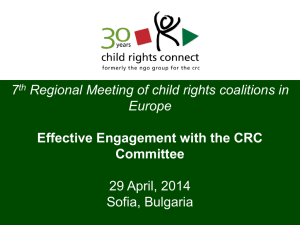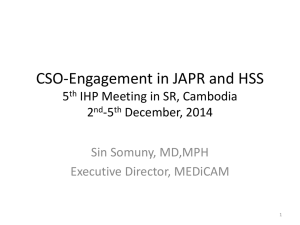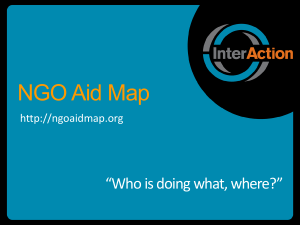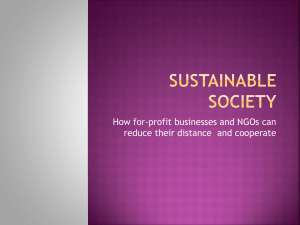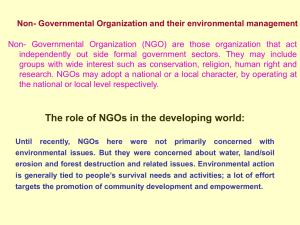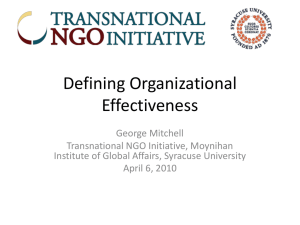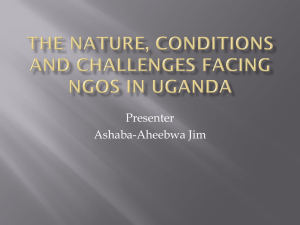The NGO Group for the CRC Vision
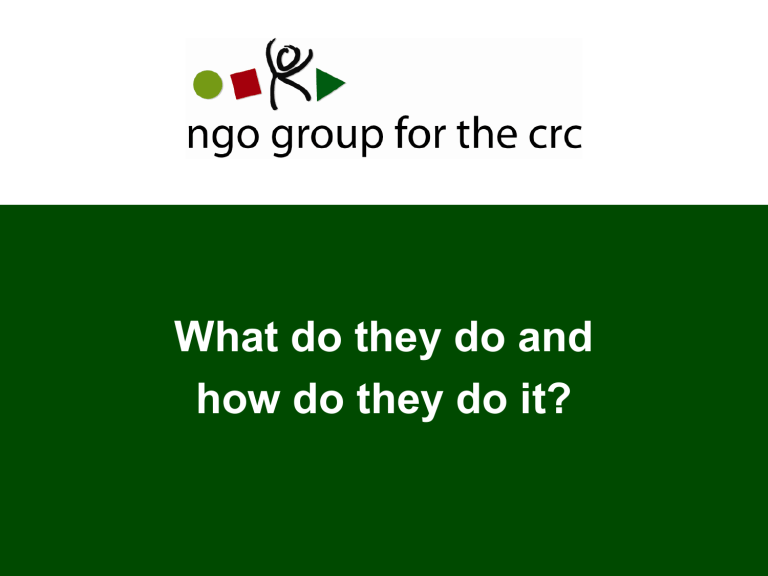
What do they do and how do they do it?
Presentation
History, structure and governance
Main areas of work
Achievements
Challenges
Lessons learnt
The NGO Group for the CRC
Vision: A world in which children’s rights, as defined by the
CRC, are universally recognised and realised.
Mission: Facilitate the promotion, implementation and monitoring of the CRC.
Global network of 71 national and international NGOs
Works with national and international NGOs in 150 countries, including over 100 national coalitions
Partner in the work of the Committee
History
20 NGOs joined forces in 1983 to coordinate their actions to draft the CRC
Unprecedented impact on the final text of an international human rights treaty
Decided to create a more formal structure to promote ratification and reporting
Structure and governance
General Assembly
(member organisations)
Executive Committee
(7-10 members)
Secretariat
(5 staff)
Thematic working groups
Children without parental care
Communications procedure for the CRC
Human Rights Council
Indigenous children
Sexual exploitation of children
Violence against children
Main areas of work
Support the work of the Committee on the Rights of the Child
Strengthen capacity and/or facilitate NGO participation in the reporting process
Develop legal instruments on child rights
Produce practical tools to advocate and monitor child rights
Mainstream child rights in the broader UN Human
Rights system
Facilitate NGO participation in reporting process
According to need, train NGOs in forming coalitions and writing alternative reports
Ensure NGOs participate effectively in the full reporting process (pre-session and session)
Pay for NGOs to attend the Committee’s meetings
Practical tools to advocate and monitor child rights
Guidelines to reporting on CRC
& its Optional Protocols
Fact sheets on elections, DGD and General Comments
Alternative report database with
CRIN
Guidelines for children to report
(coming soon)
Country reports
Website: www.childrightsnet.org
Achievements
Leading expertise in the work of the Committee and the monitoring of the CRC and its Optional Protocols
Contributes to the drafting of treaties such as the CRC, its
Optional Protocols and regional standards.
Ensures NGO input into international child rights events, days of general discussion and general comments.
Contribute to the development of the Committee’s working methods
Achievements
Model for alternative reporting for UN treaty bodies
Committee receives credible, representative and comprehensive information from national NGOs and children
National NGOs (increasingly children) have direct access to the Committee responsible for the CRC
Committee’s dialogue with states and recommendations take into account NGO information
Challenges
Managing the network structure
Keeping members focused on common goals and avoiding conflict of interest
Raising funds for ‘abstract activities’
Followup to Committee’s recommendations
Lessons Learnt
Have an independent coordinating body that follows and influences the work of the Committee
Facilitate the access of national NGOs/coalitions
Work closely with Committee secretariat, UNICEF and
Committee members and other key partners
Create practical tools for NGOs to engage effectively in the work of the Committee
Develop methods to follow-up Committee recommendations



